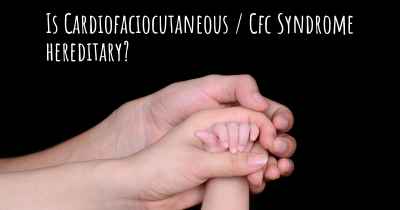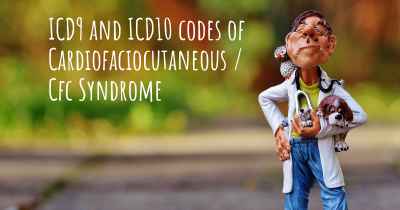What is the history of Cardiofaciocutaneous / Cfc Syndrome?
When was Cardiofaciocutaneous / Cfc Syndrome discovered? What is the story of this discovery? Was it coincidence or not?

Cardiofaciocutaneous (CFC) syndrome is a rare genetic disorder that affects various systems of the body. It is characterized by abnormalities in the heart, face, and skin. CFC syndrome was first described in the medical literature in the early 1980s, and since then, our understanding of the condition has significantly improved.
Discovery and Early Cases:
The first documented cases of CFC syndrome were reported independently by two groups of researchers in 1986. Dr. R. M. Reynolds and colleagues described a family with three affected siblings who exhibited similar clinical features, including heart defects, distinctive facial appearance, and skin abnormalities. Around the same time, Dr. M. Neri and colleagues reported a similar case in a 4-year-old boy. These initial reports laid the foundation for further research into this newly recognized syndrome.
Genetic Basis:
It wasn't until the late 2000s that the genetic basis of CFC syndrome was identified. Through the use of advanced genetic techniques, researchers discovered that mutations in several genes were responsible for causing the syndrome. The most commonly affected genes are BRAF, MEK1, MEK2, and KRAS, which are all part of the RAS-MAPK signaling pathway. These genes play crucial roles in regulating cell growth and division.
Clinical Features:
CFC syndrome is characterized by a wide range of clinical features that can vary in severity among affected individuals. Some of the most common features include:
- Heart abnormalities: Nearly all individuals with CFC syndrome have some form of congenital heart defect. These can include valve abnormalities, septal defects, or structural malformations.
- Distinctive facial appearance: Individuals with CFC syndrome often have a characteristic facial appearance, including a high forehead, widely spaced eyes, low-set ears, and a prominent chin.
- Skin abnormalities: Skin problems are common in CFC syndrome and can include dry, rough, or thickened skin, as well as hyperpigmentation or hypopigmentation.
- Growth and developmental delays: Many individuals with CFC syndrome experience delays in physical and intellectual development. These delays can range from mild to severe.
- Other features: Additional features of CFC syndrome may include feeding difficulties, respiratory problems, vision or hearing impairments, and skeletal abnormalities.
Diagnosis and Management:
Diagnosing CFC syndrome can be challenging due to its rarity and the variability of its clinical features. However, genetic testing can help confirm the diagnosis by identifying mutations in the associated genes. Early diagnosis is crucial for appropriate medical management and intervention.
As CFC syndrome affects multiple systems of the body, a multidisciplinary approach to management is necessary. Treatment is focused on addressing the specific symptoms and complications that each individual may experience. This may involve surgical interventions for heart defects, therapies for developmental delays, and supportive care for other associated conditions.
Research and Future Directions:
Since the initial discovery of CFC syndrome, ongoing research has expanded our knowledge of the condition. Scientists are working to better understand the underlying mechanisms of the syndrome and develop targeted therapies. The identification of specific genetic mutations has opened up possibilities for potential treatments that could modulate the RAS-MAPK signaling pathway.
Furthermore, advancements in genetic testing techniques have improved diagnostic accuracy and allowed for earlier identification of affected individuals. This has led to better management strategies and improved outcomes for those living with CFC syndrome.
Conclusion:
Cardiofaciocutaneous (CFC) syndrome is a rare genetic disorder characterized by heart abnormalities, distinctive facial features, and skin problems. While the syndrome was first described in the 1980s, our understanding of its genetic basis and clinical manifestations has significantly advanced over the years. Ongoing research continues to shed light on the underlying mechanisms of CFC syndrome, leading to improved diagnostic techniques and potential therapeutic interventions.








